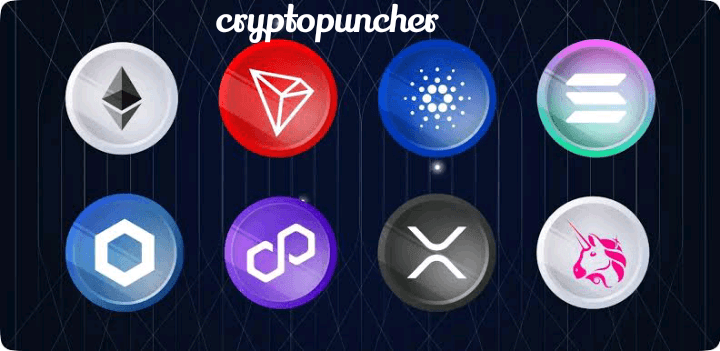Last updated on January 14th, 2025 at 05:33 pm
Cryptocurrencies have grown far beyond Bitcoin, the first and most well-known digital currency. In 2025, altcoins, short for alternative coins, are playing a crucial role in expanding the blockchain ecosystem.
But what exactly are altcoins, and why do they matter?
In this post, we will look at altcoins explained: what they are and why they matter in 2025.
![]()
This guide will break down everything you need to know about altcoins, their uses, and their significance in today’s digital economy.
1. What Are Altcoins?
Altcoins refer to all cryptocurrencies other than Bitcoin. While Bitcoin was designed as a decentralized digital currency, altcoins often serve specialized purposes. They use blockchain technology, just like Bitcoin, but with variations that cater to different needs or industries.
Popular examples include Ethereum, known for its smart contracts, and Ripple (XRP), which facilitates fast cross-border payments. Each altcoin aims to solve specific challenges or enhance features not provided by Bitcoin.
2. Types of Altcoins
Altcoins, or alternative cryptocurrencies to Bitcoin, are a diverse and evolving category of digital assets. They serve various purposes and are categorized based on their functionality, use cases, and technological features. Here are the main types of altcoins:
• Stablecoins: Cryptocurrencies designed to maintain a stable value by pegging to a fiat currency (e.g., USD) or other assets like gold. Pegged to assets like the U.S. dollar (e.g., Tether or USDC). Backed by U.S. dollar reserves. Ideal for payments, remittances, and hedging against market volatility.
• Utility Tokens: tokens used within a specific platform to access services, pay fees, or enable specific functionalities. Provide access to specific services or products on a blockchain platform, like Binance Coin (BNB). Powers the Ethereum network for smart contracts and dApps. Powers decentralized oracles for blockchain data feeds and is primarily used for enhancing functionalities within ecosystems.
• Security Tokens: Tokens representing ownership in real-world assets like stocks, bonds, or real estate. They are regulated and often comply with securities laws. Representing equity or debt in tokenized form, real estate-backed tokens issued by platforms like Polymath. It is used for investment purposes with built-in compliance mechanisms.
• Governance Tokens: Tokens that grant holders voting rights on decisions within a blockchain ecosystem, such as protocol upgrades or Treasury management. Examples:
Uniswap (UNI): Governs the Uniswap decentralized exchange.
Aave (AAVE): Allows governance over the Aave DeFi platform.
Used for enabling decentralized decision-making in crypto ecosystems.
• Meme Coins: Cryptocurrencies created as jokes or based on internet memes, often gaining value through community-driven hype. Examples:
Dogecoin (DOGE): Inspired by the Shiba Inu meme.
Shiba Inu (SHIB): A meme coin with its ecosystem of DeFi products.
Initially speculative, with some evolving into functional tokens. Understanding these categories can help you identify which altcoins align with your investment or usage goals.
• Payment Tokens: Digital currencies intended primarily as a means of payment or value transfer.
Examples:
Litecoin (LTC): Designed for fast and low-cost payments.
Bitcoin Cash (BCH): A Bitcoin fork optimized for peer-to-peer transactions.
Direct replacements or supplements for traditional fiat payment systems.
• Privacy Coins: Cryptocurrencies that prioritize transaction privacy and anonymity by concealing transaction details.
Examples:
Monero (XMR): offers advanced privacy features.
Zcash (ZEC): Provides optional privacy through zk-SNARKs. For users seeking financial privacy and untraceable transactions.
• Exchange Tokens: Tokens issued by cryptocurrency exchanges, offering benefits like fee discounts and platform rewards.
Examples:
Binance Coin (BNB): Used for discounts and DeFi within the Binance ecosystem.
FTX Token (FTT): Enabled features and rewards on the FTX platform (before its collapse).
Enhancing user experiences on exchanges.
• Decentralized Finance (DeFi) Tokens: Tokens that power DeFi platforms, including lending, borrowing, and trading without intermediaries.
Examples:
Compound (COMP): Governs the compound lending platform.
Yearn.Finance (YFI): Automates DeFi yield farming strategies.
For facilitating decentralized financial services.
• Asset-Backed Tokens
Definition: Tokens representing ownership of real-world assets like gold, real estate, or commodities.
Examples:
Tether Gold (XAUT): Backed by gold reserves.
Tokenized real estate platforms like RealT.
Use Case: Bridging real-world assets with blockchain for seamless trading.
3. Why Do Altcoins Matter in 2025?
Altcoins play a critical role in the cryptocurrency ecosystem in 2024, expanding the scope and functionality of blockchain technology beyond Bitcoin’s original purpose as a decentralized currency. In 2025, altcoins are essential because they will:
• Drive Innovation: Projects like Ethereum have introduced smart contracts, enabling decentralized finance (DeFi), non-fungible tokens (NFTs), and more.
• Expand Use Cases: Altcoins address industries beyond finance, including healthcare, supply chain management, and gaming.
• Enhance Accessibility: Lower costs and greater functionality make altcoins attractive to businesses and individual users alike.
• Diversify Investment Portfolios: For investors, altcoins provide opportunities to diversify and potentially earn higher returns than Bitcoin.
In 2024, altcoins are no longer just alternatives; they are driving the evolution of the blockchain landscape and will do so much more in 2025.
4. Risks and Challenges of Altcoins
Altcoins, despite their potential and innovation, come with several risks and challenges that investors and users should be aware of. Understanding these issues is crucial for making informed decisions in the cryptocurrency market. Altcoins come with risks:
• Volatility: Prices can swing dramatically, making them high-risk investments.
• Scams: Some projects are poorly managed or created to defraud investors.
• Regulation: Unclear legal frameworks in many countries can impact the adoption and value of altcoins.
• Market fragmentation: With thousands of altcoins available, identifying genuine projects can be overwhelming. It’s vital to research thoroughly before investing in or using altcoins.
5. How to Choose the Right Altcoin
When selecting an altcoin to invest in or use, consider the following:
• Purpose: Does the altcoin solve a real problem or add value?
• Development Team: A strong, transparent team often indicates a reliable project.
• Community Support: Popularity and active users can reflect the coin’s potential.
• Market Performance: Analyze historical price trends and market cap.
• Adoption: Check if industries or businesses are integrating the altcoin. By aligning your choice with your goals and risk tolerance, you can make more informed decisions.
6. The Future of Altcoins in 2024 and Beyond
Bitcoins continue to gain traction as blockchain technology matures. Key trends to watch include;
• Institutional Adoption: More businesses and governments are exploring altcoins for payments and services.
• Sustainability: Eco-friendly coins like Cardano are becoming more prominent.
• Interoperability: Cross-chain solutions are improving collaboration between blockchain networks.
• Enhanced Security: Projects are focusing on better security measures to combat fraud. The bitcoin market is evolving rapidly, offering exciting opportunities for innovation and growth.
Conclusion
Altcoins have transformed the cryptocurrency ecosystem by addressing gaps left by Bitcoin and introducing groundbreaking solutions.
From stablecoins to DeFi platforms, these digital assets are more than just alternatives; they’re essential to the blockchain revolution. As we navigate 2025, understanding altcoins and their impact is critical for anyone interested in the future of finance and technology.
FAQs
1. Are altcoins a better investment than Bitcoin?
Altcoins often have higher growth potential but come with greater risks. They are better suited for investors willing to explore emerging technologies and projects.
2. What are the most popular altcoins in 2024?
Some leading altcoins in 2024 include Ethereum (ETH), Binance Coin (BNB), Ripple (XRP), Cardano (ADA), and Solana (SOL).
3. How do I buy altcoins?
Altcoins can be purchased on cryptocurrency exchanges like Binance, Coinbase, or Kraken. Create an account, deposit funds, and choose the bitcoin you want to buy.
4. Can altcoins replace Bitcoin?
While altcoins address different use cases, Bitcoin remains the most recognized and widely adopted cryptocurrency. Altcoins are more likely to complement Bitcoin rather than replace it.




